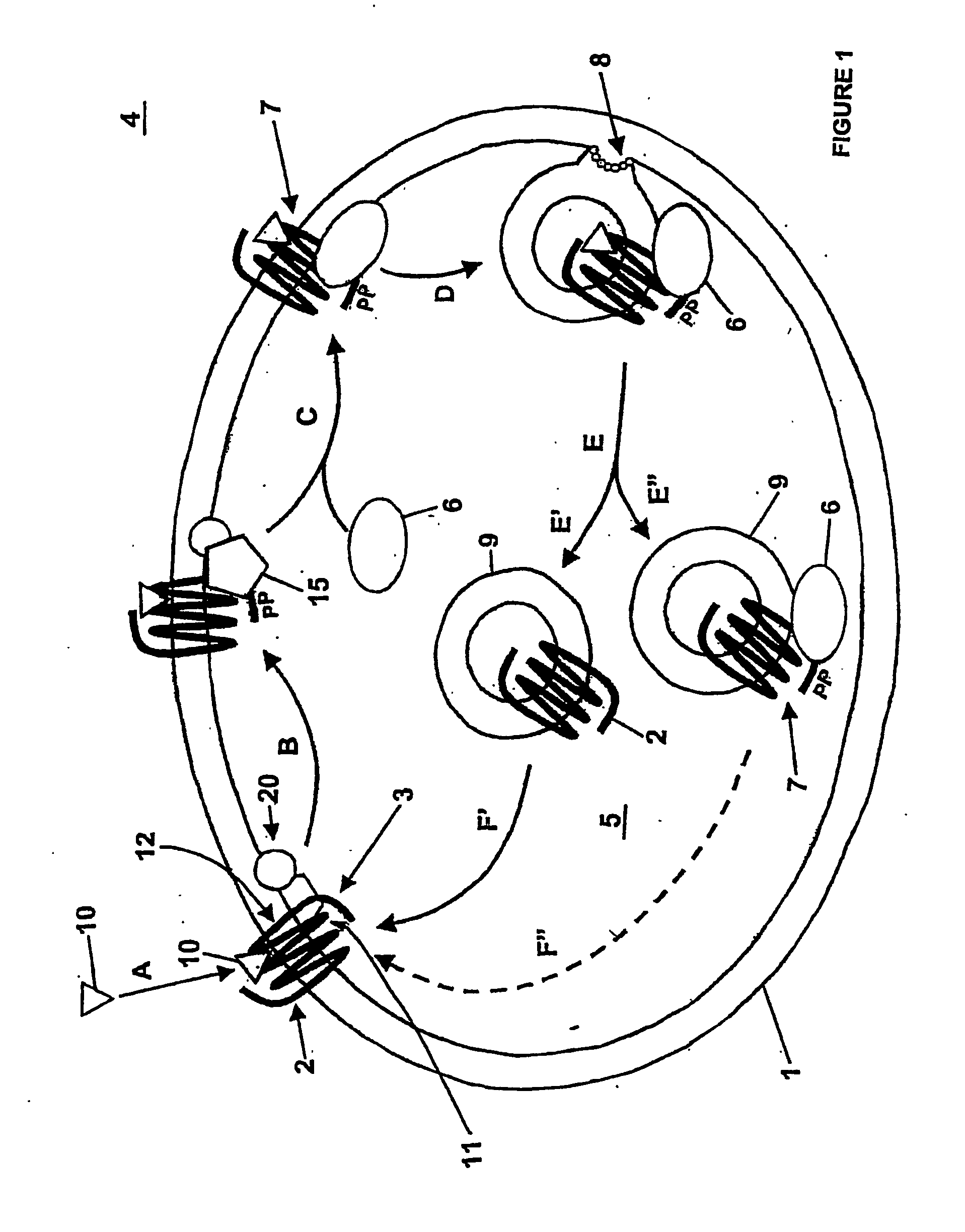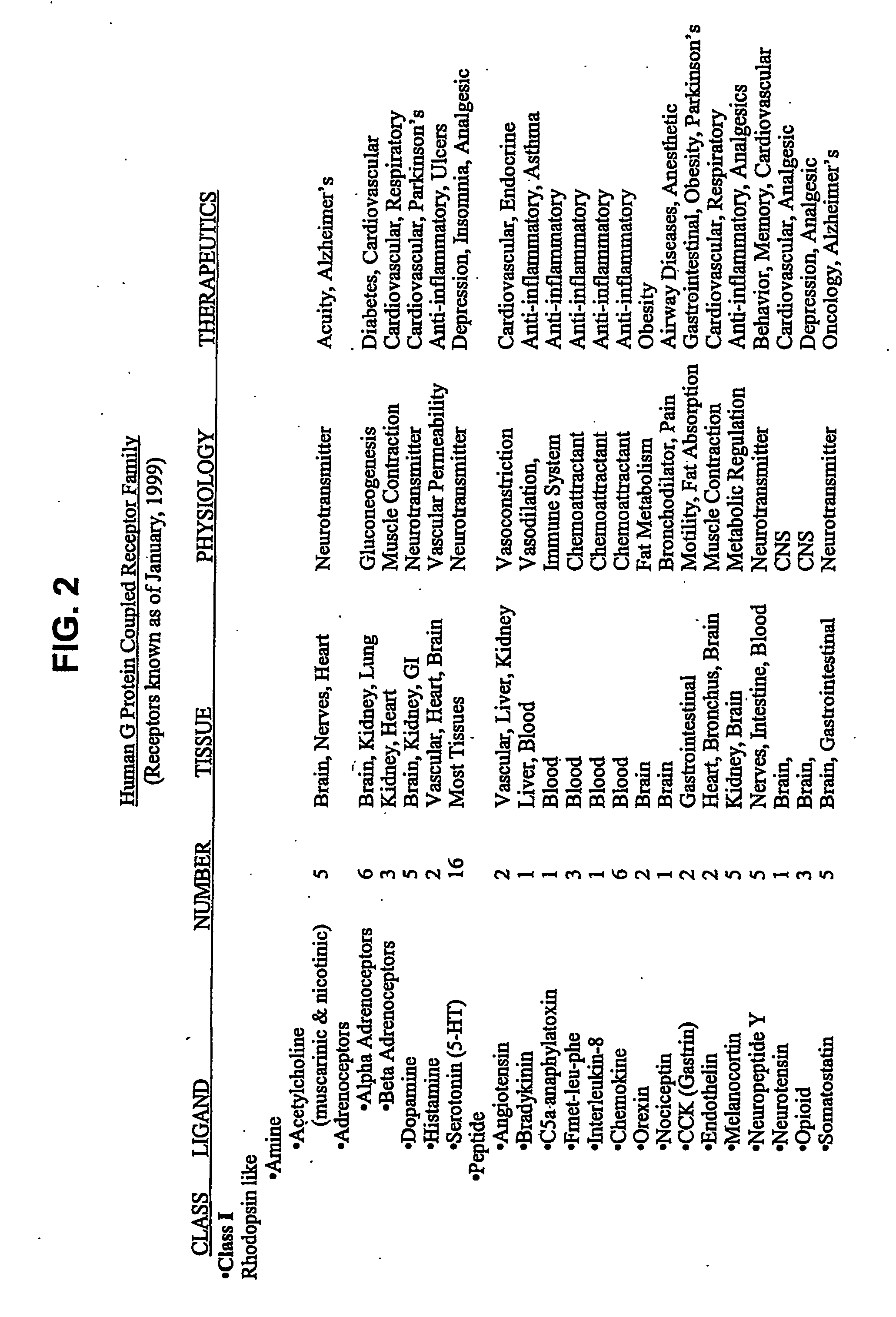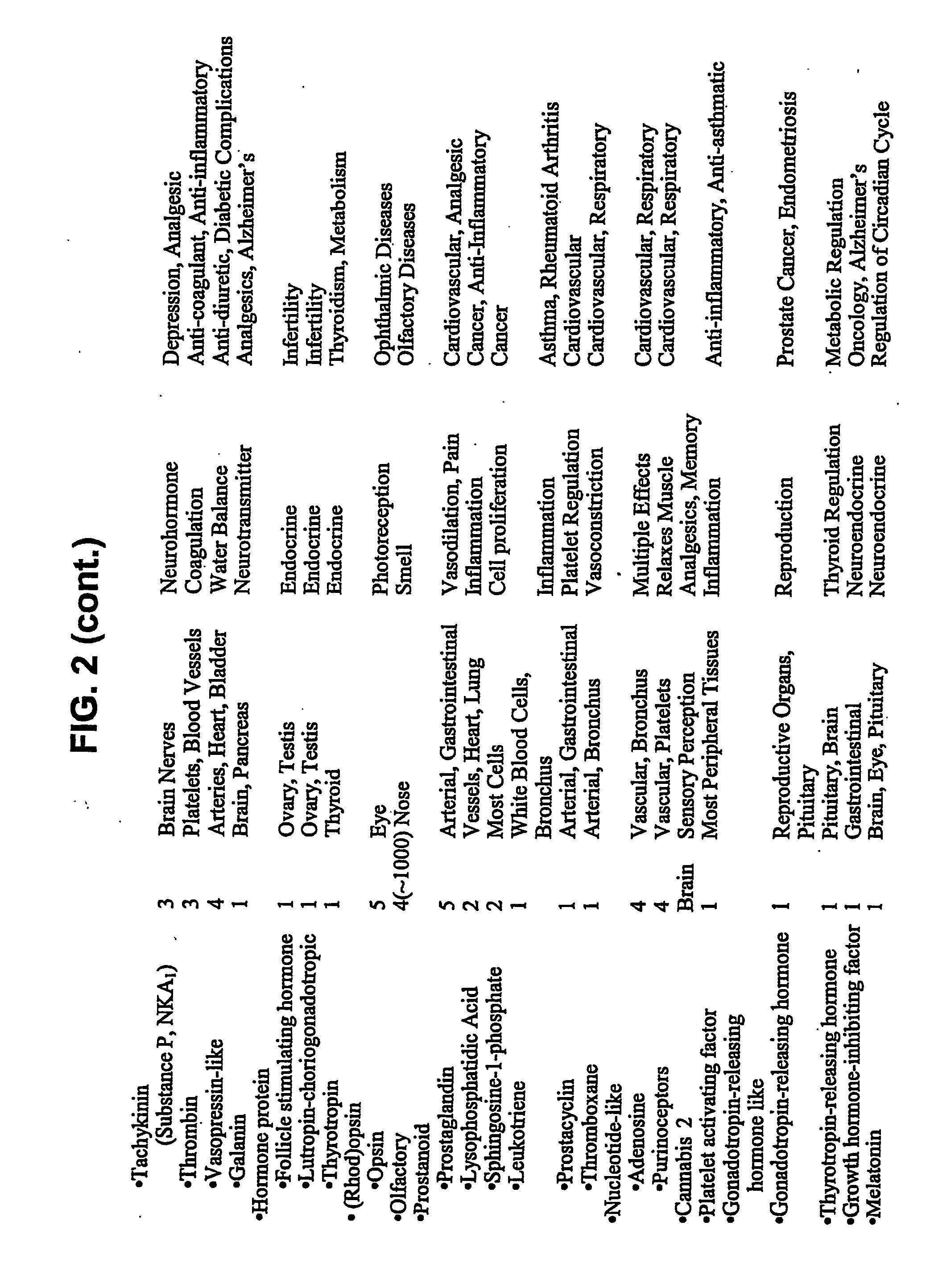Methods Of Screening Compositions For G Protein-Coupled Receptors Aganist Agonists
a protein-coupled receptor and composition technology, applied in the field of screening test compositions for g protein-coupled receptor (“ gpcr”) agonist activity, can solve the problem that existing assays are thus limited to detecting gpcr
- Summary
- Abstract
- Description
- Claims
- Application Information
AI Technical Summary
Problems solved by technology
Method used
Image
Examples
example 1
[0118] Different cell lines, each expressing a different GPCR, were pooled and then used to conduct multiplex receptor assays to screen different compounds for GPCR agonist activity. The cells used for the experiment stably expressed α1b adrenergic receptor (α1bAR), beta2-AR (β2AR), delta opioid receptor (DOR), angiotensin1A receptor (AT1AR), or V2 vasopressin receptor (V2R). Assays pooling three, four, and five of the cell lines were performed. The predominant G protein alpha subunit coupling of the receptors used for the example is as follows: α1bAR-Gq; β2AR-Gs; DOR-Gi; AT1aR-Gq; V2R-Gs.
Cells
[0119] The assays were carried out using various “double stable” human osteosarcoma cell (U2OS) lines. Each cell line stably expressed an arrestin-GFP conjugate of the Renilla reniformis green fluorescent protein fused in frame to the carboxyl terminus of rat β-arrestin2 as well as one of the following GPCRs: α1b adrenergic receptor (α1bAR), beta2-AR (α2AR), delta opioid (DOR) receptor, ang...
example 2
Multiplex Rector Assay With Three GPCRs Using LOPAC 640 Library
[0142] The three cell lines expressing human α1bAR, β2AR, and DOR, respectively, were pooled for a multiplex receptor assay according to the protocol described in Example 1 above. Wells containing the pooled cell lines were separately exposed to one of the compounds contained in the LOPAC 640 Library of Pharmaceutically-Active Compounds (Sigma-Aldrich) so that all of the compounds were tested. The three cell lines were also plated individually and wells were separately exposed to one of the compounds contained in the LOPAC 640 library so that all of the compounds were tested against each of the separate individual cell lines.
[0143]FIG. 11 is a table showing the individual and multiplex assay responses to the compounds in the LOPAC 640 library. Only those compounds exhibiting agonist activity in the individual and / or multiplexed assays are listed in FIG. 11. The individual assay responses (i.e., α1bAR, β2AR, and DOR) an...
example 3
Multiplex Assay Using “spotting” of Compounds on 384 Well Plate
[0145] The three cell lines expressing α1bAR, β2AR, and AT1AR, respectively, were pooled for a multiplex receptor assay according to the protocol described in Example 1 above. The cells were plated on a 384 well plate at 2000 cells of each cell line per well. Varying concentrations of isoproterenol, angiotensin, and norepinephrine were randomly distributed in a blinded fashion on the 384 well plate, and a response was calculated for each well on the plate.
[0146]FIG. 13 is a representation of a portion of the 384 well plate. In FIG. 13, each number represents a response value assigned to an individual well as a result of the assay, and wells to which one of the test agonists were added are enclosed in a box. As shown in FIG. 13, varying concentrations of isoproterenol were “spotted” randomly in the wells of rows F, G, and H; varying concentrations of angiotensin were “spotted” randomly in the wells of rows J, K, and L; ...
PUM
| Property | Measurement | Unit |
|---|---|---|
| volumes | aaaaa | aaaaa |
| fluorescent | aaaaa | aaaaa |
| chemiluminescent | aaaaa | aaaaa |
Abstract
Description
Claims
Application Information
 Login to View More
Login to View More - R&D
- Intellectual Property
- Life Sciences
- Materials
- Tech Scout
- Unparalleled Data Quality
- Higher Quality Content
- 60% Fewer Hallucinations
Browse by: Latest US Patents, China's latest patents, Technical Efficacy Thesaurus, Application Domain, Technology Topic, Popular Technical Reports.
© 2025 PatSnap. All rights reserved.Legal|Privacy policy|Modern Slavery Act Transparency Statement|Sitemap|About US| Contact US: help@patsnap.com



